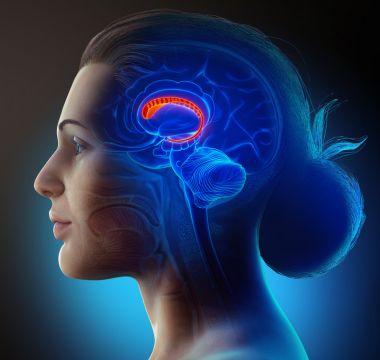New Study Finds Blood Test Can Help Track Parkinson’s Symptoms and Progression

Researchers found changes in molecules in the brain and blood that are associated with Parkinson’s, they also found changes linked to certain symptoms
Two of the most widely recognized hallmarks of Parkinson’s disease (PD) are tremors and slowed movement. However, when these symptoms appear, it means that people with PD have already lost up to 60% of their dopamine neurons. Neurons are nerve cells in the brain that are crucial for maintaining a balanced and functioning nervous system.
Diagnosing and treating Parkinson’s early can fend off severe symptoms for years. Inversely, when a diagnosis is delayed, rapid decline can be more likely to occur. Unfortunately, there are no tools, besides assessing symptoms, to diagnose Parkinson’s or predict the course of the disease. However, a new study in Nature Communications has found evidence of molecular changes in the brain and blood of people with Parkinson’s who experience cognitive and movement complications of PD.
Finding molecular changes in the blood that mirror changes in the brain is essential for developing new minimally invasive tests that can diagnose Parkinson’s, be able to track the course of the disease, and monitor how it is responding to treatment.
Parkinson’s symptoms are primarily caused by the death of dopamine neurons in the brain. Dopamine allows us to regulate motivation, memory, cognitive functions, and motor skills. One critical region in the brain that relies on dopamine for these functions is the striatum, which has two regions that behave differently in Parkinson's:

- The caudate: When dopamine levels drop in this area, it leads to cognitive impairment.
- The putamen: When dopamine levels drop in this area, motor control is impacted.
Both regions are densely populated with the same kinds of neurons. While we know how these areas impact movement and cognition, we still do not understand the molecular mechanisms underlying these distinct responses in the human brain.
To learn more about changes in these brain regions, which are difficult to study as they are deep in the brain, researchers used brain samples from 35 people who died with Parkinson’s and 40 people who died without neurological issues. They looked for changes in RNA (a molecule essential for various biological processes) and identified thousands of RNAs that were different in those with Parkinson’s compared to those who did not have the disease.
Study Findings
-
RNA changes in the brain: Many of these RNA changes were linked to the function of the synapse, the special connection between nerve cells that allow them to communicate with each other. Researchers found decreases in RNAs involved in dopamine neuron dysfunction and death; an increase in RNAs involved in inflammation and immune hyperactivation; and an increase in RNAs involved in stress response.
-
Mirroring patterns in the blood: To compare whether the changes they observed in the brain were mirrored in blood samples, the researchers accessed samples from the Parkinson’s Progression Markers Initiative (PPMI), which has collected blood from people who do and do not have Parkinson’s. They found that the RNA levels in the brain were altered in the same direction in the blood.
- Changes associated with cognitive impairment: The researchers found 57 RNAs in the caudate that were significantly altered in donors that had been diagnosed with Parkinson’s disease dementia. When researchers looked at the differences in RNAs in the blood of people with PD vs. healthy controls, they found a few RNAs that were altered in people with PD.
- Changes associated with movement symptoms: The researchers found 18 RNAs in the putamen that were significantly altered in donors who experienced levodopa-induced dyskinesia. When researchers looked at differences in RNAs in the blood of people with PD vs. healthy controls, they found no significant differences.
- Differential patterns depending on age at PD onset: The researchers also found differences between the brains of people who were diagnosed with Parkinson’s before and after the age of 55 — those who were diagnosed earlier showed fewer molecular changes than those who were diagnosed later. Similar results were found in blood.
Study Highlights
- People with Parkinson’s have unique changes in RNA molecules in brain regions that rely on dopamine for regulating motivation, memory, cognitive functions, and motor skills.
- Similar RNA changes were also observed in blood samples of people living with Parkinson’s.
- Patterns of RNA changes were associated with certain symptoms (e.g., cognitive decline, motor complications) or disease features (e.g., early vs. late onset).
What does this mean?
Today, only invasive tests can track molecular changes in the brains of people with Parkinson’s. This study has found that molecular changes that happen in the brain can also be found in the blood. In the near future, this information can be leveraged to develop minimally invasive blood tests that could be used to help confirm a Parkinson’s diagnosis, track disease progression, and evaluate how the disease is responding to treatment. However, more studies are needed before these findings can be used as a clinical tool.
What do these findings mean to the people with PD right now?
People with Parkinson’s symptoms should talk to their doctor about screening.
Learn More
The Parkinson’s Foundation believes in empowering the Parkinson’s community through education. Learn more about PD and the topics in this article through our below resources, or by calling our free Helpline at 1-800-4PD-INFO (1-800-473-4636) for answers to your Parkinson’s questions.
Related Blog Posts


